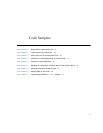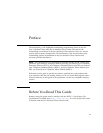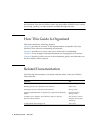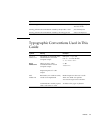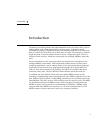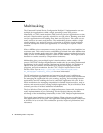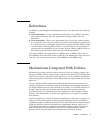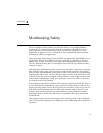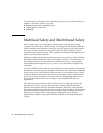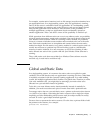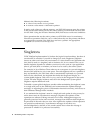
1
CHAPTER
1
Introduction
Customers use mobile phones and other handheld devices for many tasks, such as
making phone calls, taking photographs, playing games, organizing contact
information, keeping a calendar of events, and accessing web sites. It is natural for
them to want to do more than one of these tasks at a time. For example, a customer
might not want to shut the address book to receive a flight-delay alert. The Java
Wireless Client software, which can concurrently run multiple MIDlets, meets this
need.
Device manufacturers and service providers also benefit from being able to run
multiple MIDlets concurrently. This functionality enables them to write built-in
(resident) applications, such as address books, in the Java programming language.
Applications written in the Java programming language (Java applications) are
easier to write and maintain, more portable, and easier to customize than those
written in native code. The Java Wireless Client software meets this need too.
In addition, the Java Wireless Client software enables MIDlet writers to take
advantage of multitasking without changing their code. MIDlet suites that run in the
Java Wireless Client software’s multitasking environment are no different from any
other MIDlets: They have no new APIs and they have the same life cycle. The MIDP
2.1 Specification advises all MIDlet writers about managing resources when the
MIDlet is paused and resumed. In a multitasking environment, a MIDlet might
compete with other MIDlets for resources, so it is more important than ever for
MIDlet writers to follow that advice and to use resources carefully.



